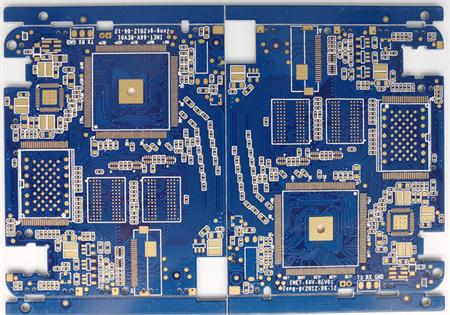
1、 Q: The resistance of a short copper wire in a SMAll signal circuit must not be important, right?
Answer: If the conductive tape of printed PCB is made wider, the gain error will be reduced. Generally, it is better to use wide conductive tape in analog circuits, but many PCB designers (and PCB design programs) prefer to use the smallest width conductive tape to facilitate the layout of signal lines. In a word, it is very important to calculate the resistance of the conductive tape and analyze its role in all possible problems.

2、 Q: The question about SIMple resistance was introduced earlier. It is true that there must be some resistors, and their performance fully meets our expectations. What is the resistance of a section of wire?
A: The situation is different. You are referring to a section of wire or a section of conductive tape in a PCB that acts as a wire. Since room temperature superconductor has not been invented yet, any section of metal wire acts as a low resistance resistor (it also acts as a capacitor and inductor), so its impact on the circuit must be considered.
3、 Q: Is there a problem with the capacitance formed by the conducting tape with excessive width and the metal layer on the back of the printed circuit board?
Answer: The question is very small. Although the capacitance formed by the conductive tape of the printed circuit board is important, it should always be estimated first. If the above situation does not exist, even if a wide conductive belt forms a large capacitance, it will not cause problems. If it causes problems, the area of a small grounding plane can be removed to reduce the capacitance to the ground.
4、 Q: What is the ground plane?
Answer: If the copper foil on the entire side of a printed circuit board (or the entire interlayer of a multilayer printed circuit board) is used for grounding, then this is what we call the grounding plane. The layout of any ground wire should make it have the smallest resistance and inductance possible. If a system uses a ground plane, it is unlikely to be affected by ground noise. The grounding plane has the function of shielding and heat dissipation.
5、 Q: The grounding plane mentioned here is very diffICult for the manufacturer, right?
A: Twenty years ago, there were some problems in this regard. Today, due to the improvement of bonding agent, solder resistance and wave soldering technology in printed circuit boards, the manufacturing of ground plane has become a routine operation of printed circuit boards.
6、 Q: You said that a system using a ground plane is unlikely to suffer from ground noise. What can we do to solve the problem of ground noise left behind?
Answer: Although there is a grounding plane, its resistance and inductance are not zero. If the external current source is strong enough, it will affect the precise signal. This problem can be minimized by reasonably arranging the printed circuit board so that the large current cannot flow to the area that affects the ground voltage generated by the precision signal. Sometimes breaking or slitting on the grounding plane can change the flow direction of large grounding current from the sensitive area, but forcibly changing the grounding plane can also make the signal bypass into the sensitive area, so such technology must be used carefully.
7、 Q: How can I know the voltage drop generated on a ground plane?
Answer: Usually, the voltage drop can be measured, but sometimes it can be calculated according to the resistance of the grounding plane material and the length of the conductive belt that the current passes through, but the calculation may be complex. The instrument amplifier can be used for the voltage from DC to low frequency (50kHz). If the ground of the amplifier is separated from its power supply, the oscilloscope must be connected to the power supply ground of the power circuit used. LED lighting
The resistance between any two points on the grounding plane can be measured by adding probes to these two points. The combination of amplifier gain and oscilloscope sensitivity can make the measurement sensitivity reach 5 μ V/div。 The noise of the amplifier will increase the width of the oscilloscope waveform curve by about 3 μ 5. However, it is still possible to make the measurement resolution reach about 1 μ V level, which is enough to distinguish most grounding noises, and the confidence can reach 80%.
8、 Q: How to measure high-frequency grounding noise?
Answer: It is difficult to measure high-frequency grounding noise with a suitable broadband instrument amplifier, so it is appropriate to use high-frequency and VHF passive probes. It is composed of ferrite magnetic ring (with an outer diameter of 6~8mm). There are two coils on the magnetic ring, each with 6~10 turns. To form a high-frequency isolation transformer, one coil is connected to the input end of the spectrum analyzer, and the other coil is connected to the probe. The test method is similar to the low frequency case, but the spectrum analyzer uses the amplitude frequency characteristic curve to represent the noise. This is different from the time-domain characteristics. Noise sources can be easily distinguished according to their frequency characteristics. In addition, the sensitivity of spectrum analyzer shall be at least 60dB higher than that of broadband oscilloscope.
These are the eight classic answers to PCB wiring tips









